Restaurant reservation systems are an essential part of modern restaurants, but are you sure yours has all the right capabilities?
Maybe you find your current system clunky and frustrating.
Or, you might still be taking bookings the old-fashioned way, and want to find a powerful new tool.
Either way, you should start by exploring the must-have features of a great reservation system.
Knowing them can help you transform how you manage reservations, thereby saving you time and attracting more happy diners.
Read on as we unpack the seven key features to look for and explain exactly why they're so important for streamlining your operations.
Let's dive in.
Online Reservations
Let's start with the most obvious feature you'll want in a restaurant reservation system: online reservations.
Sure, pretty much any system should help organize phone bookings and walk-ins, but ultimately, you want is to reduce your reliance on those methods.
You want guests to take charge of their own bookings whenever possible.
Why? Because customers actually want online reservations.
Take a look at some of the platforms shown below and the percentage of diners who reported using them to find restaurants.
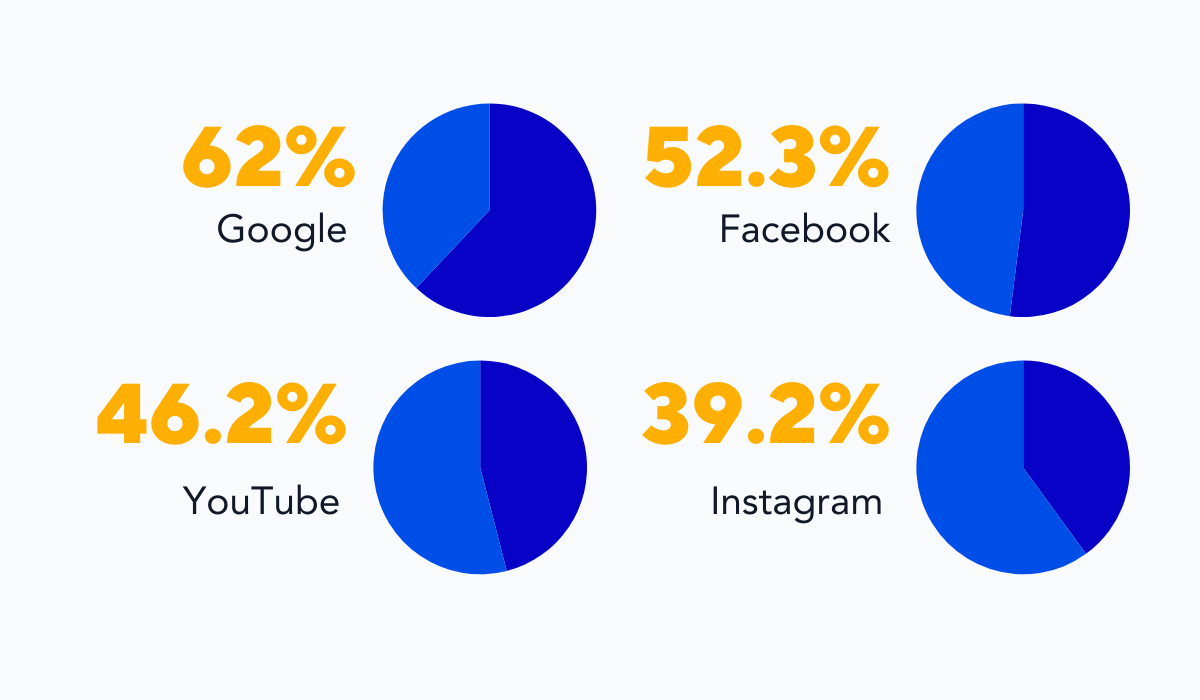
Illustration: Tablein / Data: PYMNTS
A huge percentage of diners rely on these platforms for restaurant information and inspiration when they want to eat out.
It only makes sense to meet them where they are and let them snag a table in those moments of interest.
Let’s see an example of how this feature can help boost reservations.
Imagine someone stumbles upon the British-Chinese restaurant WowYauChow while browsing on Google.
Intrigued by some great food photos, they may check out their website.
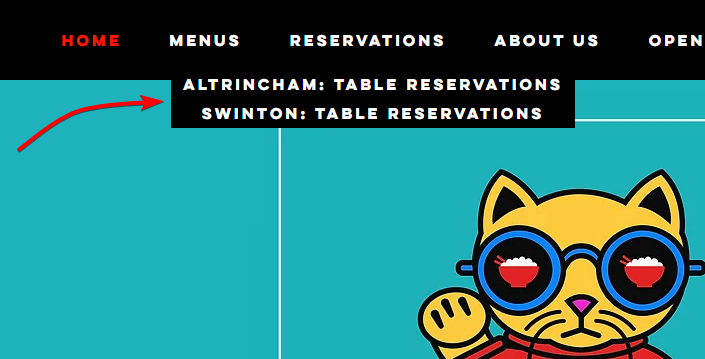
Source: WowYauChow
If they like what they see, all they need to do is click on "Reservations" and pick the location at which they want to book a table.
Next, they are redirected straight to the Tablein booking widget shown below.
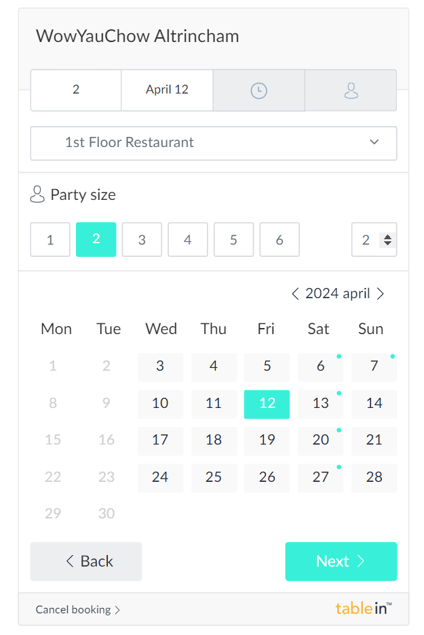
Source: Tablein
With just a few clicks, they can pick their party size, desired date and time, and enter some basic details—reservation done!
That's the power of online booking.
No phone tag, no waiting for business hours to book a table.
Just a smooth process that's as convenient for guests as it is for you.
Overall, this is the key feature to look for as it can really do wonders for your restaurant.
Real-Time Availability
Online bookings are amazing, giving guests the flexibility to snag a table on their own schedule.
But what happens behind the scenes to ensure everything runs smoothly and no booking errors occur?
That's where real-time availability comes in.
This feature essentially tracks each table status—open, reserved, occupied—and keeps everything updated.
Here's a breakdown of one scenario where real-time availability is used.
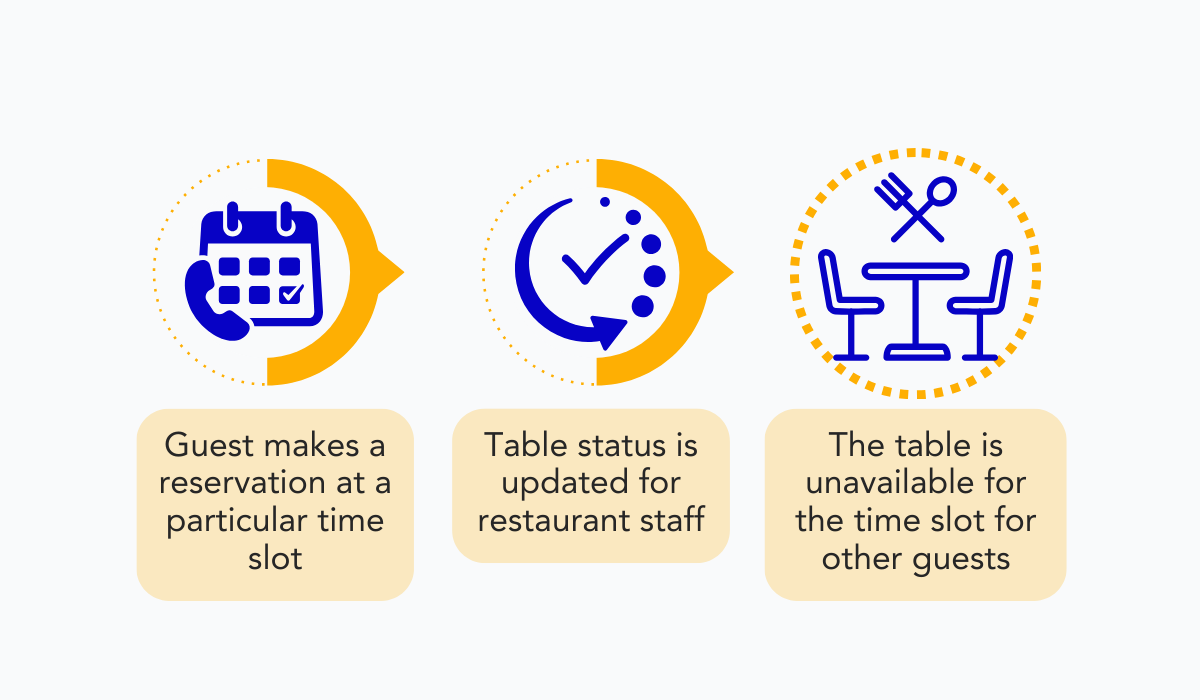
Source: Tablein
This feature is just as crucial for your staff as it is for guests.
To illustrate why real-time data is so valuable for staff, check out the Reddit comment shown below from a restaurant worker.

Source: Reddit
As you can see, the staff’s outdated reservation list caused a major double-booking headache.
With no timely update on their end, they had nothing they could do but try to manage the large amount of double bookings as best they could.
Real-time data eliminates this issue entirely, allowing your staff to confidently manage your dining room and ensure a smooth operation.
But let's not forget about your guests!
Just imagine a guest opening up online bookings and finding that the perfect slot for them was available. Great!
But what if that slot was only open because the reservation system didn't update fast enough?
It's a recipe for an unpleasant experience like the one described below.

Source: TripAdvisor
Even the best dinner experience can turn sour if it has to be rushed due to overbooking or double bookings.
So, check whether your prospective reservation system has real-time availability options to avoid these booking mishaps.
Reservation Modification
You know as well as we do that just because a reservation is made doesn't mean it's written in stone.
Plans change, guest counts fluctuate, and sometimes a Tuesday dinner suddenly needs to shift to a Friday night.
This is why making seamless booking modifications is a must-have feature in your reservation system.
Take a look at the reservation screen of our own restaurant reservation system, Tablein.
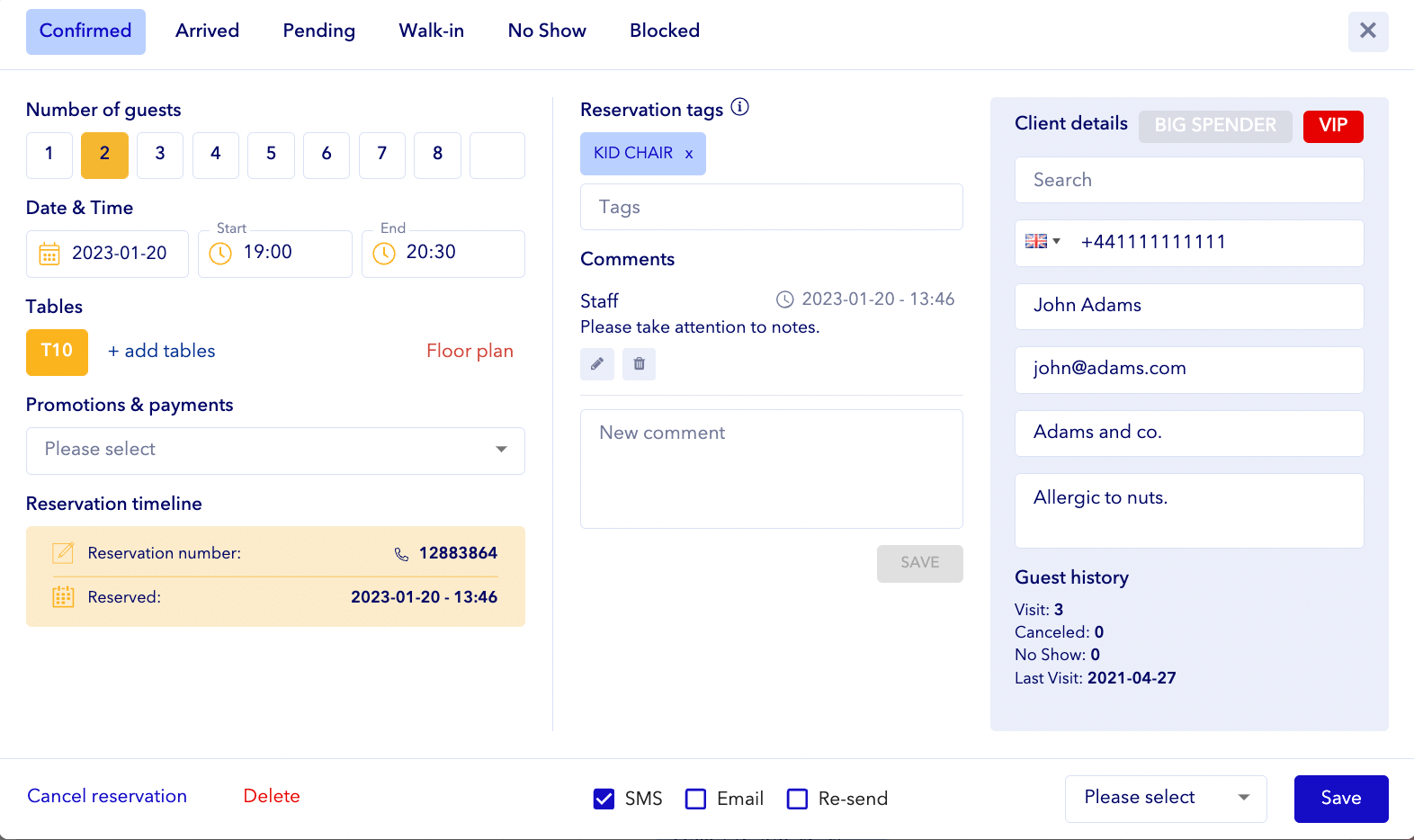
Source: Tablein
See all those options?
Tablein will not only provide you with all the reservation information you could possibly need.
It will also make it easy to edit and update it all—from the reservation status itself to the details like the number of guests, date, and time.
Your staff really needs this flexibility to manage those inevitable last-minute changes.
Details like allergies, seating preferences, or special requests should also be easily modifiable.
This is important for more than just convenience, as it builds trust and shows that you prioritize creating a tailored dining experience.
Beyond your staff being able to make adjustments, a great reservation system can also empower your guests with some control.
Even a simple cancellation option, as shown below, can be a huge relief for diners who need to change plans.
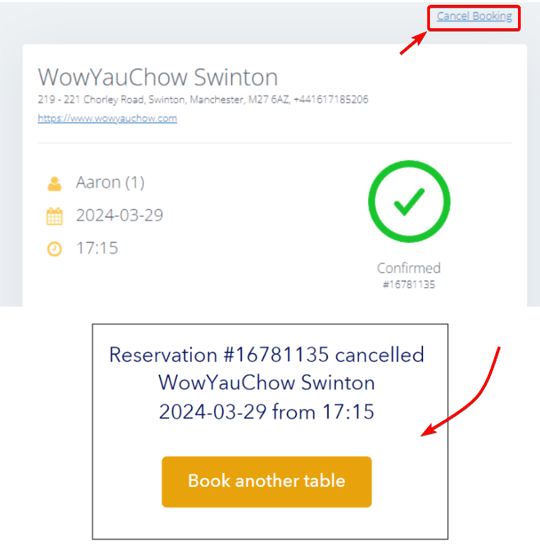
Source: Tablein
Ideally, your system would let guests rebook immediately or even better—alter their original reservation’s time and date without having to fully cancel.
It's a seemingly small feature, but it can be the difference between retaining a reservation and losing it altogether.
By empowering both your staff and your guests with these options, you get more effective table management and a smoother experience for everyone.
Table Management
A reservation system shouldn't just be about getting guests in the door, but also about what happens after they arrive.
That's where table management features become crucial.
After all, you don't want a smooth booking process followed by a chaotic dining experience.
Think about this Yelp review shown below.
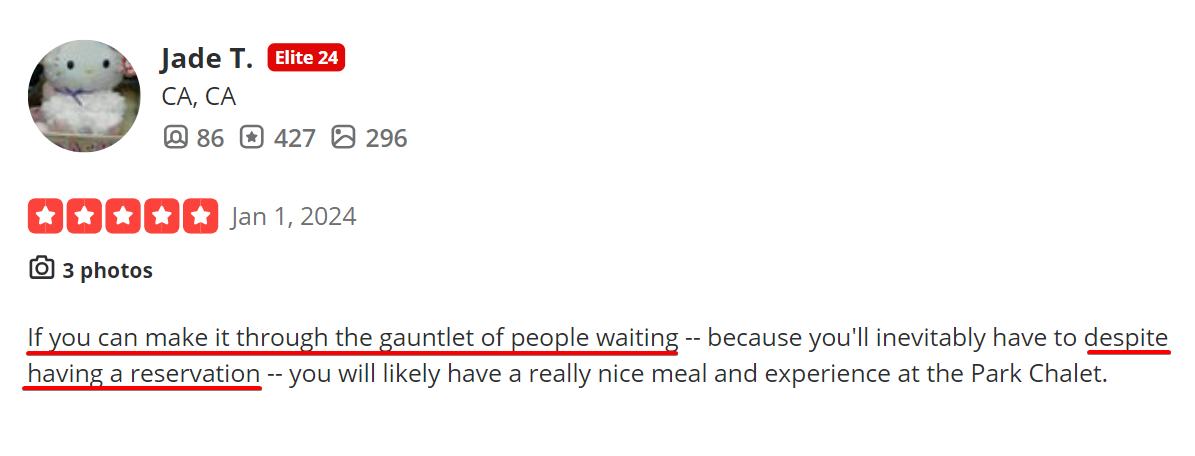
Source: Yelp
Although the guest’s experience was an overall success, it’s still important to consider what would lead to the long wait times.
Sure, sometimes slow and inefficient service is the culprit, but don't underestimate the impact of poor table management.
Maybe walk-ins were accidentally seated at a reserved table.
Or a lingering group wasn't gently encouraged to move to the bar, preventing a new party from being seated.
These issues often stem from staff lacking the information they need for smooth decision-making.
Without clear visibility into each table's status or knowing how long a reservation is meant to last, it's easy for things to get messy.
That's when a great reservation system needs to do its magic.
Powerful table management capabilities start with a detailed floor plan feature.
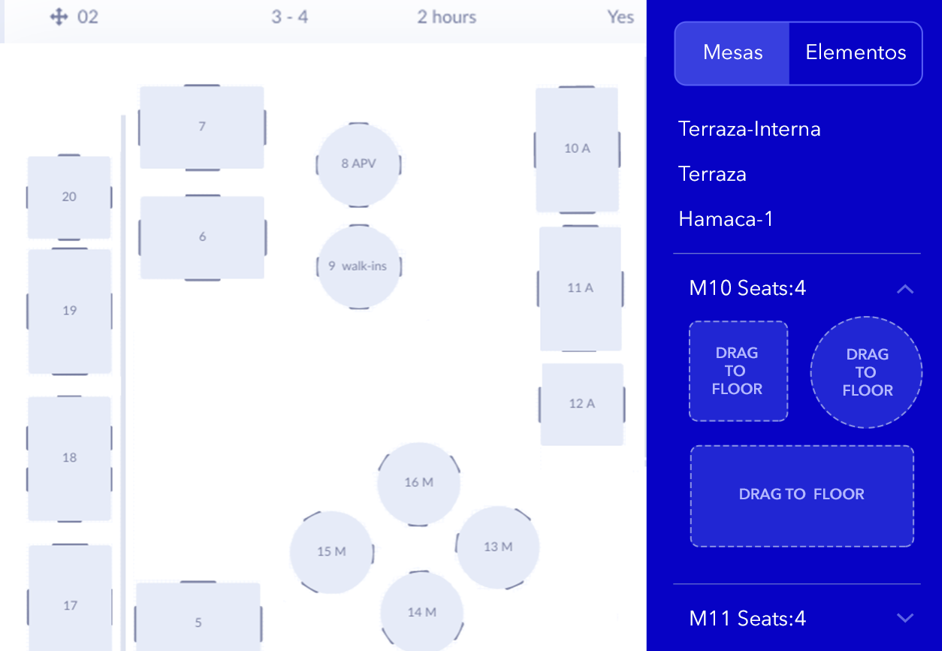
Source: Tablein
Your staff should see every table, its status (reserved, occupied, open), and any associated reservations, complete with exact times.
Simply put: all the information they need for an optimal flow.
The benefits are huge.
No more frantic searches for open tables, no accidentally giving away a reserved spot, and the ability to gently manage table turnover so reservations aren't kept waiting.
All in all, this feature is the key to maximizing your dining space and, most importantly, keeping guests happy.
Real-Time Notifications
Let's talk about a guest-focused feature that can seriously benefit your bottom line: real-time notifications.
We've all dealt with no-shows and those last-minute cancellations that throw a wrench into your plans, right?
And while it's tempting to blame guests entirely for these issues, the truth is a bit more nuanced.
Check out this data from Carbon Friendly Dining, showing the most common reasons guests fail to cancel a reservation.
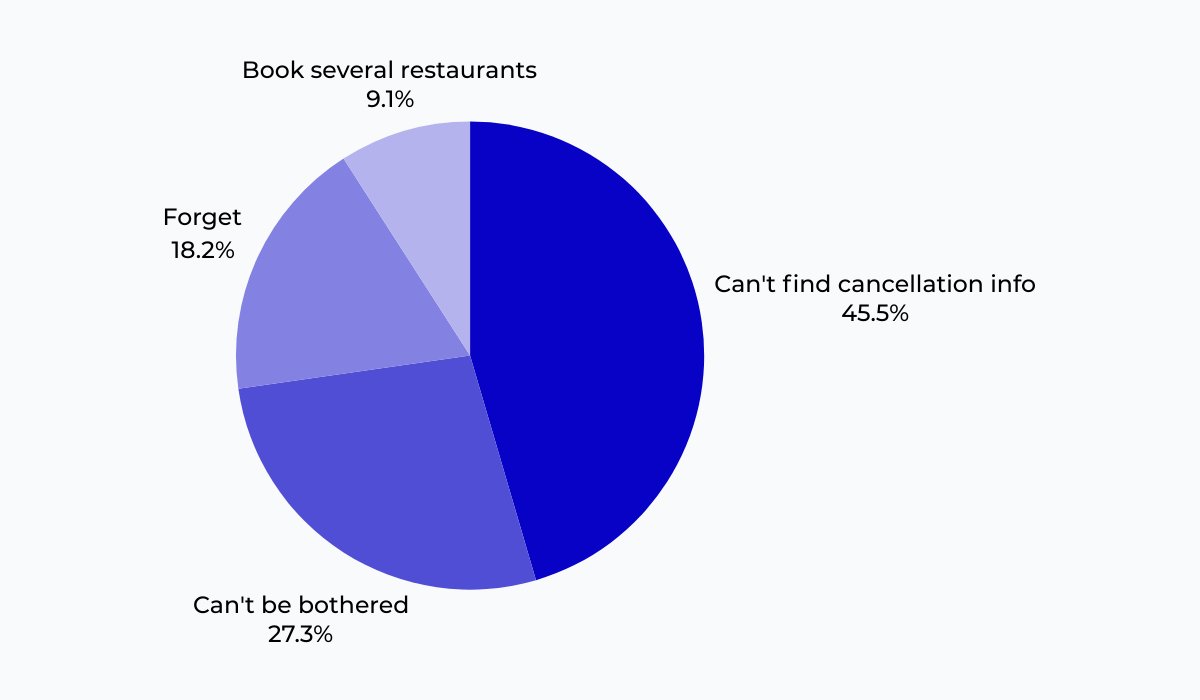
Illustration: Tablein / Data: Carbon Friendly Dining
While there will always be guests who book a table at several restaurants or can’t be bothered to cancel on time, it is clear that a huge chunk of no-shows stems from not finding cancellation info, or guests simply forgetting about their reservation.
That's where automated email and SMS notifications from your reservation system become a game-changer.
For emails, you want a system that immediately sends booking confirmations, plus periodic reservation reminders.
These reminders should include the reservation details like the date, time, and location, and clear links for canceling or making reservation changes.
Then, a day before the reservation, an SMS reminder is ideal.
Take a look at the example shown below.
.png?width=1200&height=700&name=image9%20(1).png)
Illustration: Tablein / Photo: ©mihailomilovanovic via Canva
A quick text is far more likely to be seen compared to an email that might get buried in a busy inbox.
It's a final nudge for those who need it, lowering no-shows and giving you ample time to fill the table if a cancellation does occur.
With the right mix of notifications, you can give forgetful guests a gentle reminder while making cancellations easier for everyone.
Integration with Other Systems
A powerful reservation system is great, but it's rarely a one-stop-shop for your operation.
That's why you want a system that plays nicely with all the other tools you use through seamless integrations.
Let's start with your online visibility and bookings.
As we mentioned, guests discover restaurants through various online platforms.
But you can also integrate with the same platforms and increase your reach.
Take a look at some key integrations in regard to bookings.
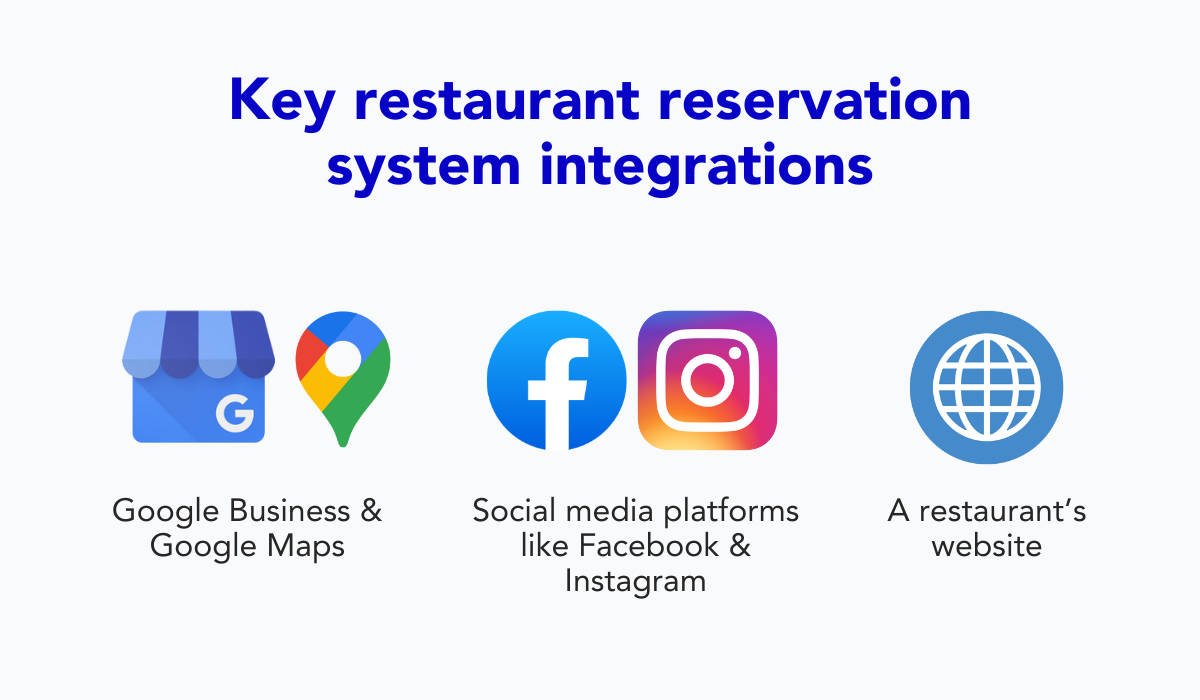
Source: Tablein
The integration could be as simple as a booking link placed on your social media pages or on your Google Business profile.
Or it could be a well-integrated booking widget on your restaurant website.
These integrations put reservations front and center where potential diners are already browsing—talk about convenience!
But integrations go beyond just getting reservations.
Here are a few of these other possibilities:
- Payment integrations
- Marketing tools
- POS integration
Payment integrations (think Stripe) can streamline prepayments and deposits, while email marketing platforms like Mailchimp let you target past guests with promos to fill tables on slower days.
And finally, integration with your point-of-sale system is a must for keeping dining room data and reservations in sync.
With the right integrations, your reservation system becomes the hub that can streamline your operations, expand your reach, and delight your guests with a seamless experience.
Reporting and Analytics
Finally, let's dive into how your reservation system can help grow and optimize your business by giving you valuable insights.
A top-notch restaurant reservation system crunches all of the data that you’re working with and turns it into actionable reports.
These reports can range from neatly organized reservation and guest feedback lists, to more in-depth analytics that illuminate:
- Reservation peaks and valleys
- Guest spending patterns
- Table turnover rates
- No-show statistics
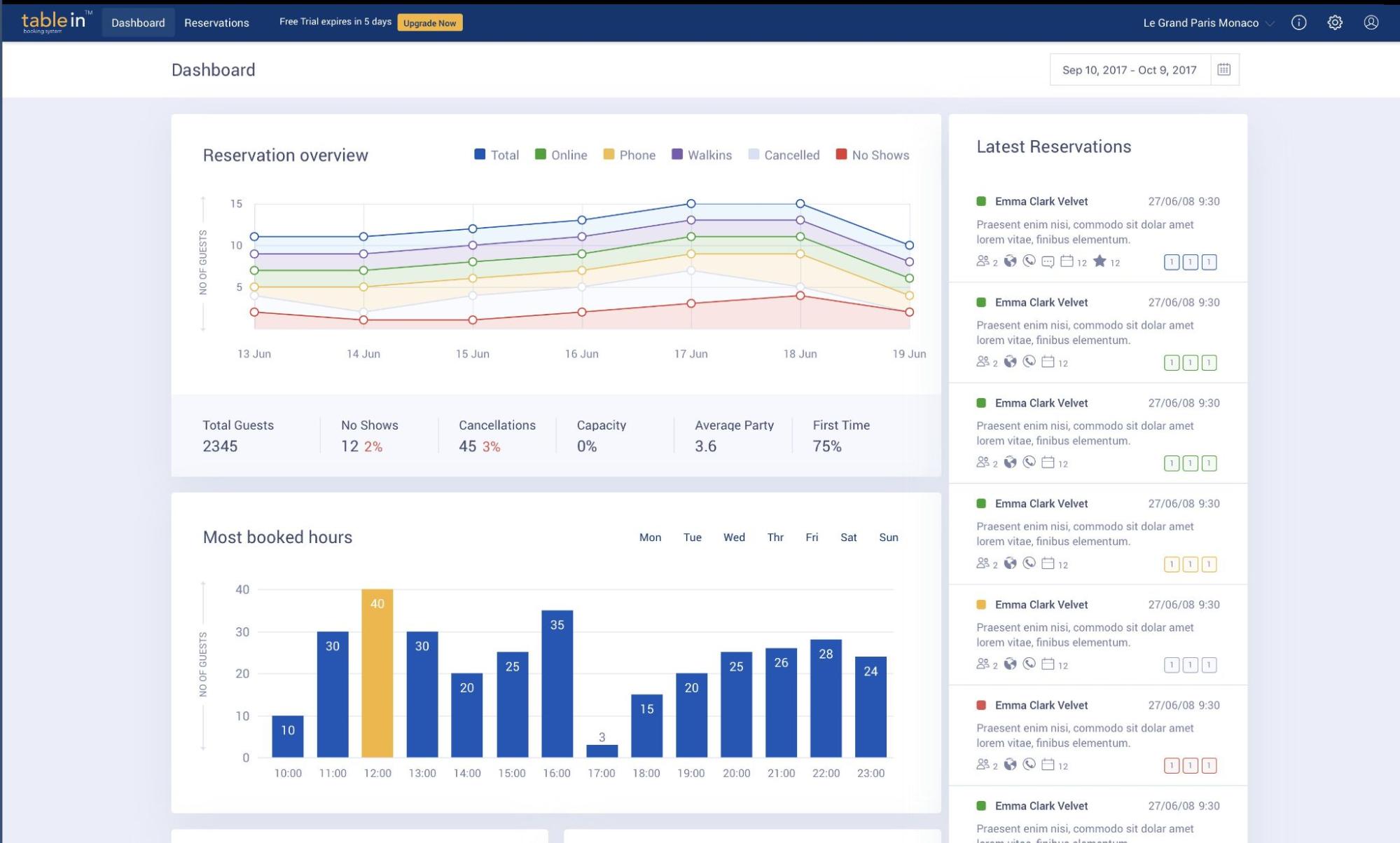
Source: Tablein
Why is this treasure trove of data so valuable?
Because it allows you to move beyond hunches and industry averages and base your decisions on cold, hard facts about your own business.
Imagine you discover these industry-wide statistics from Toast about popular reservation days.
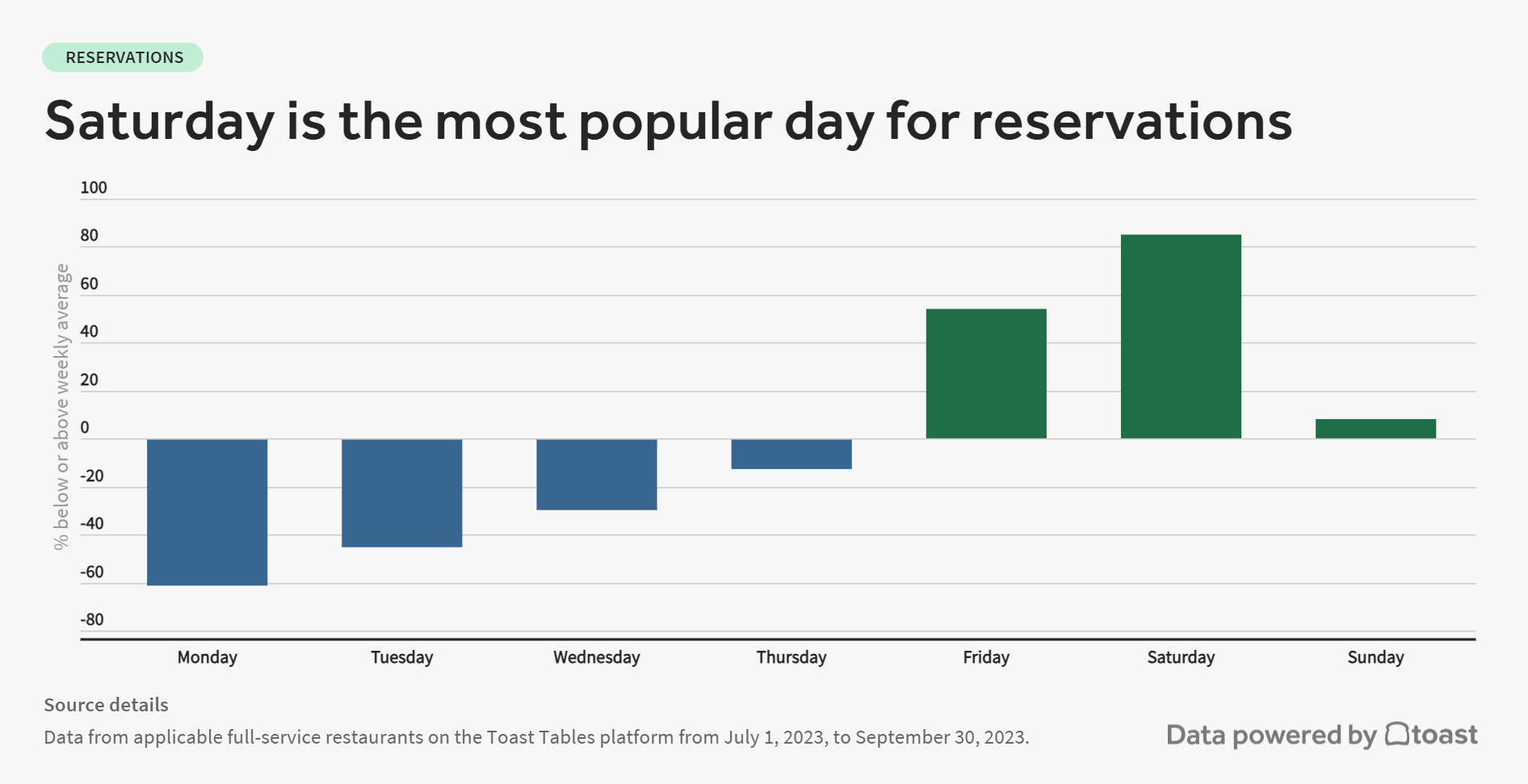
Source: Toast
Useful, right?
You could try to entice mid-week diners with specials or staff up accordingly for those weekend rushes.
But what if you had your own personal data and figured out the busy days or peak hours specifically for your restaurant?
After all, maybe your clientele prefers a leisurely mid-week lunch instead of following the trends and dining out on Friday and Saturday.
With your unique data, you could tailor promotions to your quieter periods.
You'd know exactly when to optimize staffing instead of making guesses.
Maybe you'd even discover that certain tables are less popular—time to rethink the layout or ambiance in that section!
See the difference? That's what analytics can do.
It takes the guesswork out of your decisions and helps you run a smarter, more profitable restaurant.
Conclusion
So, there you have it.
We've explored seven must-have features, from online reservations and table management to analytics and useful integrations.
While your specific restaurant might need some additional bells and whistles, these core capabilities are non-negotiable.
Why? Because they'll make the reservation process a breeze for both you and your guests.
Say goodbye to endless phone calls and missed bookings during off-hours.
Instead, unlock 24/7 online reservations, the ability to manage tables effortlessly, and valuable data insights to guide your decision-making.
Armed with this knowledge, you're well on your way to finding a system that provides the right support for a successful restaurant.
Get a 30-day Exclusive Trial
As a Tablein blog reader, you’re eligible for an exclusive 30-day free trial to experience our simple reservation solution for your restaurant.
Enter your business email, and we’ll send you all the steps needed to create your account.
Share this
You may also like

5 Benefits of an Online Reservation System for Restaurants

5 Tips for Increasing Your Restaurant’s Table Turnover Rate
